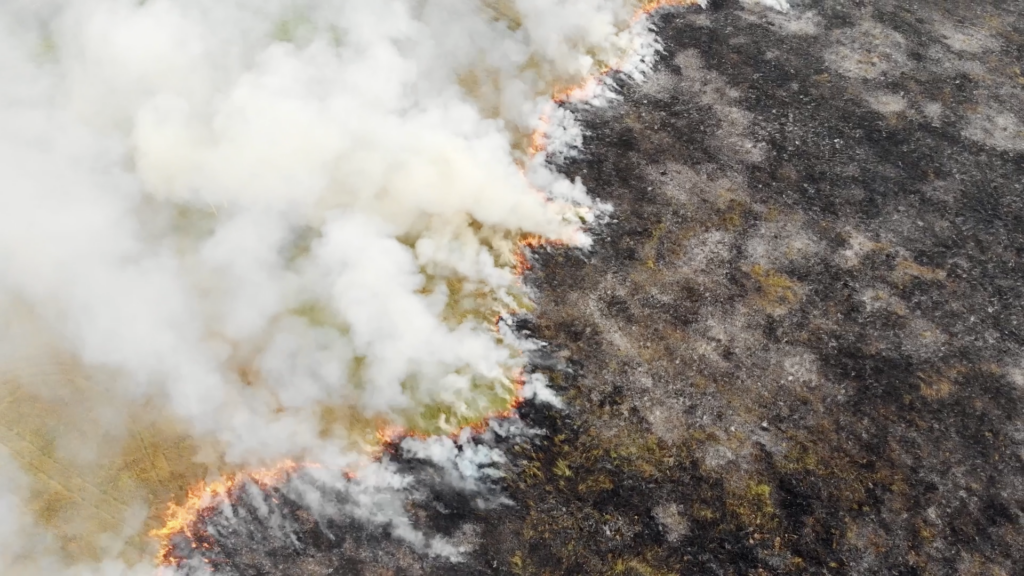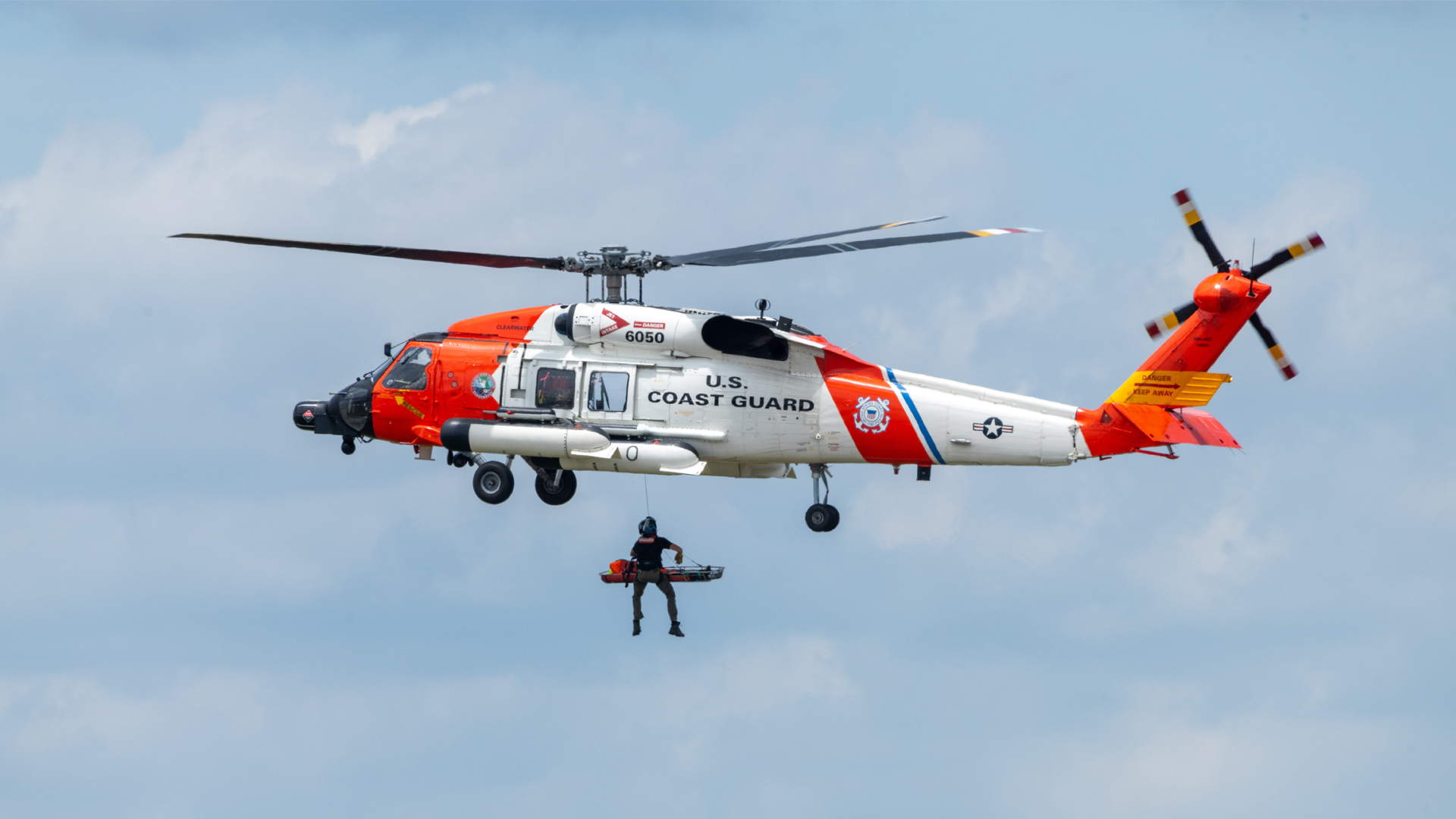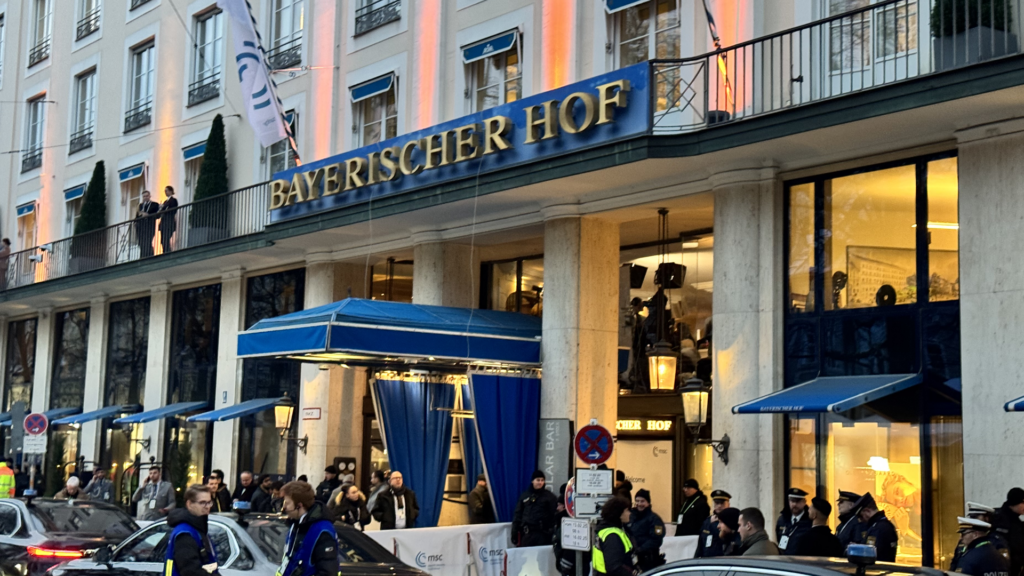Dataminr is proud to sponsor the 2024 season of the Maritime Nation podcast, hosted by retired U.S. Navy Admiral James G. Foggo, Dean for the Center for Maritime Strategy. The podcast takes a deep dive into U.S. sea service policy changes and provides listeners with quality analysis of the most pressing maritime security challenges.
In this episode, titled, “The United States Coast Guard: At the Intersection of Diplomacy, Law, and Security,” Admiral Linda L. Fagan, 27th Commandant of the U.S. Coast Guard, shares her thoughts on the Coast Guard’s current challenges and strategic opportunities for how it recruits talents, manages operations and works with international partners.
For the full interview, listen to the podcast below or read the transcript that follows, which has been edited for clarity and length.
Can you expand on themes you outlined in your State of the Coast Guard Address and tell us how you’re going about getting after it?
Many of the challenges in front of us are not unique to the Coast Guard. Some of the workforce shortfall, the recruiting challenges, they are common across, not just the military services, but employers literally around the world. It is the topic that I find alignment with just about everybody that we interact with.
Maintenance shortfall
The maintenance shortfall, let me start there. This has been a challenge for the Coast Guard. In my remarks last week [State of the Coast Guard Address], I said that, next year, we’ll probably have about 50% of the maintenance funding that’s needed to reliably support and maintain both the legacy fleet of cutters and those new fleet of cutters like the National Security Cutter.
So, as you know, if you do not do planned maintenance when you need to do the planned maintenance, the ships get a vote and they start to put you into the category of unplanned maintenance—which never comes at a convenient time and always comes at increased cost and really directly reduces the readiness of the cutter fleet and then has direct impacts on what and how we’re providing presence and operational effects to the American public.
And as the new ship classes have come online, I talked about the National Security Cutter, how we launched the first Offshore Patrol Cutter (OPC)—ARGUS, which was launched in October 2023—we’re on contract for Waterways Commerce Cutters, working to build a Polar Security Cutter.
Each of those new asset types, incredibly capable, are going to be great capacity for the nation. But they’re more expensive to operate, more expensive to maintain and, along with that maintenance, shoreside infrastructure to ensure that they’ve got the right support when they come back shoreside. All of that is a challenge in front of us from a maintenance account standpoint.
Workforce and talent management
With regard to workforce and talent management, we have done a lot to invest in recruiting. Several years ago we shrunk our recruiting capacity. And this is not a surprise to recruiters or talent management specialists, it’s a people-intensive undertaking to recruit people into the service. We’ve been hiring those professionals back in.
We’ve opened new recruiting offices, we’ve gotten much better at going to young people where they are. I didn’t know what the term Twitch was a few years ago—it’s an online collaborative gaming site—but it’s where the young people are that we need to bring in. So instead of a big advertising campaign on the evening news, which 18 to 20-somethings are not watching, we’re going to them where they are, we’re standing up Junior ROTC programs.
I was in Chicago at the end of last week meeting with one of our units there and they had about 20 members from the local JROTC program. It was so great to see these young people in Coast Guard uniforms and, whether they joined the Coast Guard or the Navy or other military service, it was exciting to give these young people the opportunity. The military is a job for all of us, it’s not just a Coast Guard or a Navy challenge, so it was just great to see.
And then I’m sure we’ll talk some more about changes that we’ve made in how we manage talent. Step one is getting you to join the Coast Guard, then step two is making it easier for you to stay, and I look forward to talking about some of that.
Where does your maintenance normally take place? Do you have specific ports or civilian yards?
We put contracts out competitively. In some regards, we are in direct competition with the Navy for that major shipyard space. And as our ships have gotten bigger, it puts us in more direct competition. For dry docks in particular.
So, Polar Star, our heavy security cutter would be a great example, where she, every year, comes back. In fact, she’s en route to home port now but will go directly to Mare Island in San Francisco. The last five or six years, we’ve had a long-term contract there.
Interesting fact not many people know is that we operate our own shipyard here in Baltimore called the Coast Guard Yard. We’ve made some investments and continue to look to make investments so that that yard might, in the future, be capable of doing maintenance and dry docks on something as large as the Offshore Patrol Cutter. But it’s a competitive process for gaining access to that dry dock and heavy maintenance.
What is the Coast Guard’s role in supporting the U.S. mission and objectives in the Pacific?
I just got back from just an incredible trip and opportunity to engage with our allies and partners. We do that work in coordination with the U.S. Department of State and other government agencies and the Indo-Pacific commander to ensure that Coast Guard engagement and operations in the theater are well coordinated with some of the other efforts.
We used to talk about growing demand for the Coast Guard, the demand signal for the Coast Guard is loud and growing louder. In the kinds of competition space in the maritime domain, the Coast Guard is really a ready-made organization for those kinds of engagements. We’re a professional maritime force. We’re a military. We’re a law enforcement agency, and we’re able to engage partner nations where they are to help them increase their own capacity to enforce their own sovereignty.
Perfect example of this would be—and part of the reason I was in Vanuatu—was the Coast Guard Cutter Harriet Lane. It’s a medium endurance cutter that was being fielded new when I was a young ensign. They are not so new anymore, however, that ship recently completed a service life extension and we moved her from the East Coast to Honolulu.
She will be in Honolulu for the next couple of years but, at some point, will either need to come back to the Navy and ask for more time or there is opportunity to potentially home port her somewhere else in the Pacific. Just beginning those conversations, lots of interest obviously in the ship, but she is being operated as a Pacific support tender, engaging partners and nations in the region.
As I came on board Harriet Lane in Vanuatu, four ship riders, law enforcement, fisheries professionals from Vanuatu had boarded the vessel and they sailed after I departed. So, the Harriet Lane provides the lift, if you will, and their experts in law enforcement and fisheries conducted the boardings enforcing Vanuatu sovereignty in Vanuatu’s exclusive economic zone.
Harriet Lane did that with Fiji as well. We have a number of those key bilateral and partner exchanges literally around the world. They provide just great opportunity and engagement for the U.S. Coast Guard and like-minded partners, and I think really just speaks to the value proposition of how we operate in the region.
Regarding Harriet Lane, how’s the crew taking to this new mission in the Pacific?
They could not have been more excited. We talk, as I’m sure you doin the Navy, about how to make sure that you keep people excited about the opportunity to serve at sea. One of the ways you do that is by providing exciting missions and then fun places when it’s time to have a little bit of reset in port.
The crew could not have been more excited about the work or more understanding of the strategic intent, the need for the Coast Guard, why the Harriet Lane was in the part of the world that she was in, and what our value proposition is. Also, we have a Coast Guard band, she’s based here in Washington, D.C., part of the diplomacy effort. We deployed a few members of the band, and are talking about getting some rugby teams out there.
Again, what the region is hungry for, and this came through loud and clear in every engagement I had, is for persistence—that they know that they can rely on us, the United States, to persistently be there. Not a big grand gesture every couple of years, but enough capacity to operate more regularly in the region.
It’s one of the conversations we’re having with the National Security Council and requires budget adjudication and appropriation…what types of investments might be made in the U.S. Coast Guard to create more persistence in the region separate from the conversations around Navy, Marines, Guam, all that. But the Coast Guard really has a specific and special niche there that, I think, can create a lot of that, builds on that trust relationship and creates capacity.
The Coast Guard is part of the effort to combat illegal, unreported and unregulated fishing (IUUF). Why is this work so critical?
At its most elemental, illegal, unreported and unregulated fishing (IUUF) is theft. It’s theft of a nation’s natural resources, and it erodes the rule of law. It breaks down maritime governance, it’s inconsistent with our natural world order with regard to every nation’s right to their sovereignty. Activity that is counter to that in the maritime realm erodes that sovereignty and the rule of law. It truly is a global challenge.
We published an IUUF strategy; I think it was about two years ago. The intent is to help bring focus and understanding to the fact that it is a worldwide problem. It is truly happening globally and it will take multilateral, bilateral, many lateral, many approaches of like-minded nations to counter that malign activity.
In the case of the Vanuatu shipriders, they boarded, it was 10-plus Chinese fishing vessels, there were some minor infractions but nothing significant. But actual presence is required to ensure that vessels are in fact complying with the international order and fishing has been a major unacknowledged threat around the world.
What hurdles do you have to get over to continue to bring the best people into the Coast Guard?
First, let me do a shout-out to our 21,000 Coast Guard auxiliarists. The listeners may or may not know that the Coast Guard Auxiliary is an all-volunteer service. People volunteer their time. They wear uniforms that look similar to the one I have on, and they’ve got small boats. We help them with some maintenance offset, fuel funding, and aircraft.
Going back to last week’s Chicago event with all those JROTC students, there were eight auxiliarists there, several of them providing legal advice. Anything that you can think of that you might need to support your force, the auxiliary does it for us. We just provide them access to units. They don’t get anything for their time, so I just want to say thank you to our auxiliary force.
I mentioned the JROTC program, there was a time, you don’t have to go back too many years ago, where we took the view that we couldn’t afford a JROTC program. My current view on it is we can’t afford not to have one. Whether it’s us or another service, illuminating for young people what the opportunity in the service is, is really, really critical. We have reinvested in recruiter capacity, we’ve also stood up a talent acquisition specialist recognizing that you get your best return on investment when professionals are engaged and out there helping you on board that talent.
The riskiest thing we can do right now when it comes to people is to stay in the status quo.
Meeting people where they are as we try and illuminate what our value proposition is as a service and then giving those talent acquisition specialists the tools that they need to make it easy to get somebody on board, including the use of mobile tools and increasing the number of recruiting offices to make that better.
We do have some good news on that front. At our peak the shortfall was about 3,500 personnel, primarily non-rates and junior petty officers. That number is down, closer to 2,900. The buses are generally full in Cape May, our single accession source or point, but we aren’t on a trajectory that buys the number back down. We’ve stabilized and so are not continuing to grow that shortfall.
This is where some of the work I started around two years ago around talent management and talent transformation becomes really critical. Step one is we got to land them but then, two, exciting people to stay. That requires significantly challenging assumptions as to what it means to have a successful career and serve in the military. We are like the other services, it’s an up or out organization. You generally start at the bottom and then you progress, based on time and learning, forward.
One of the things that became very apparent to me, particularly with our enlisted workforce, is that we are not getting 18-year-olds out of college. We get some, but the majority of the people coming into Cape May are 22, 23, 24.
They may have some college, they’ve worked for a while, have EMT credentials and/or culinary school credentials. So one of the things we’ve done with our A schools is customize them so that, for example, if you arrive with an EMT credential—which is 75% of what it means to be a corpsman, one of our health specialists—we accept that credential and then spend our time teaching you how our clinics and systems work.
It is speeding people through their then professional or A school requirement about 30% faster. We have 150 petty officers over the past year that moved through our training school on the West Coast 30% quicker and are out in the fleet.
We allow people a little more ownership in when they move and how they move—creating opportunity for people to opt out of promotions or to extend tour lengths.
The other thing we did is transition to self-paced. We had one individual who worked through high school with his dad, who was an electrician. He came to us to be an electrician. The standard for being an electrician is unchanged, but he self-paced and tested himself. He finished in under half the time because he already knew the material.
So adapting the system to the workforce that you’re actually getting has been a key initiative advancing to position. Instead of the straight, “you have to take a test and then you get promoted and then you have shop,” we allow people a little more ownership in when they move and how they move—creating opportunity for people to opt out of promotions or to extend tour lengths.
Obviously, not everyone can stay in the job they’re in indefinitely, but there are things you can do to make it easier for people to have ownership and manage their own career and continue to serve and meet the needs of the organization. What I’ve told my team is the riskiest thing we can do right now when it comes to people is to stay in the status quo.
The status quo is the risk position. And if we don’t get something right, then we reserve the right to do it, pull that back and do it again. But if we don’t do anything, we won’t have the workforce that we need to operate the new ships that are coming.
The up and out system
The system’s optimized for 18-year-old entry level people. The other way the system is primed as an up or out system, there is a presumption that every officer that steps foot into the organization someday wants my job and that every enlisted person someday wants to be the master chief petty officer of the Coast Guard.
That is an incredibly expensive and wasteful way to run a talent system. And then defining what success looks like. Success could look like a 15- or an 18-year-old or 15- or 18-years of service lieutenant. The blended retirement system is going to help with that as people take more ownership of how they want to manage their own lives and view success.
We have an air station in Sacramento and it’s only one of two locations that particular aircraft flies at, it’s like, “Why are we rotating the pilots? They’re here, they love what they’re doing, we need to continue to leverage all that expertise and experience.”
It is a different way of thinking about the system but those realities apply to all of the services now and the young population that we’re recruiting from, they’re incredibly bright. I’m really optimistic about the future because of the talent that’s out there, but they have different views on what conditions of employment they’re going to be willing to accept and, again, we need to meet them where they are.
On the cutters, where you have a gap, how do you compensate for that?
One of the things we did last fall, and we were at the height of the 3,500 person shortfall, was to try and rotate. The bulk of our force rotates during the summer. We start the assignment process in the fall and, by about this time, everybody’s got orders and then the pieces start to move. We realized that we needed to basically not advertise open billets and needed to take a really critical view of the organization. Where do we need the people, not where do the people need to go.
That prompted a speeding up of decommissioning of a couple of legacy cutters, couple 210s. We’re having reliability issues, material and readiness just continue to increase expenses. Why send a crew to a cutter that you know you’ve got very low reliability on? We just didn’t advertise the billets and we’re going to speed them to decommissioning.
The other thing that we are doing, and I talked about the 65-foot cutters, we’re running them like a boat instead of assigning a crew to them. Consolidating personnel at some of our key small boat stations so that you may not have all the leadership and overhead at a more remote station, but the crew goes over TAD (temporary additional duty) to be in position on the weekends for the heavy search and rescue mission.
The mission and the mission risk that I’m asking you to do has changed fundamentally so we need to think differently about how we make sure you’ve got the enablers you need.
The priority was to meet our requirements to the public, time requirements for search and rescue, and maintain the safety, security and resiliency of the Marine transportation system, those are no fail, right in the threshold mission. One of the other things that we’ve been doing is, and the cutter crews in particular tend to be very vocal, those COs (commanding officers), which is good.
One of them called me on it this time last year. We were in the midst of some very heavy maritime migration numbers. It was really challenging our crews and our units and the one CO, he says, “Are you going to normalize sailing this ship at 75% of the personnel allowance?” And I said, “No, I am not going to do that.”
But then I said, “My challenge to you is, at 100% of your personnel allowance, I would suggest you’re actually not ready for the mission that I’m asking you to do today. That allowance list was established 20-plus years ago. The mission and the mission risk that I’m asking you to do has changed fundamentally so we need to think differently about how we make sure you’ve got the enablers you need.”
So in this case, the cutters would come down through Miami and we’d put extra translators on board, extra medical personnel, extra security staff, extra cooks. Assume that you’ll have several hundred people on deck for some period of time that you’re going to need to secure and provide a humanitarian experience for, but don’t do that on the back of the crew. Provide the extra enablers so that they’ve got what they need.
And right now, this morning was great news, we have no migrants on deck. The posture and lay down of the force is working quite effectively for us so that you don’t need all those extra people on board but you need to be prepared to surge them when and if you face that changed risk dynamic.
Does the mission of the Coast Guard lend itself to hybrid systems or uncrewed systems?
We are making some progress with unmanned systems, such as ScanEagle.
Teams deploy with our National Security Cutters as they go into the West Pacific, into the eastern Pacific, Caribbean, wherever we have a National Security Cutter. They are game-changing, the loiter capability, particularly in our counter narcotics efforts. ScanEagle gives us a competitive advantage. You can acquire the target but don’t need to worry about losing them. You can wait till daylight, you can drive the risk down to your crew.
We need to continue to accelerate into unmanned systems but one of our big challenges is data and data governance. We do not have the IT infrastructure that you need to move the data, analyze the data, turn it into decision space and we’re making some of those investments so that, as some of those key unmanned systems and enablers begin to really come into the portfolio, that we are actually able to create knowledge and decision space.
Saildrone has been just absolutely critical. I know Southcom’s got some in the fight, we’ve got some in the fight, again, just another great technology. I do think about, as technology changes, my challenge to the workforce. Because we’ve challenged assumptions on talent management, it’s also challenging some of our legacy assumptions around operating principles. The doctrine stands the test of time pretty well, but thinking differently about how we create capacity, certainly as it involves unmanned systems, but also as we think about our role in securing the marine transportation system.
Space and space exploration is going to continue to challenge our work in resilient, secure waterways. Cyber and the risk particularly to the marine transportation system in cyber as it pertains to both ships and facilities and skated systems. All risk that is with us now, which is evolving, but difficult to see. And as I peer into the future, those are all areas of opportunity and leadership where the Coast Guard will continue to lean in.
How is the Coast Guard prepared to protect the U.S. maritime transportation system at home or abroad?
That’s a great question and you see the relative ease with which commercial shipping is being disrupted in the Red Sea and the very significant and dramatic impact with regard to rerouting and substantial shifts. And our economic prosperity relies on reliable access to sea lanes, all of the commercial goods that come and go from the U.S. We spent a lot of time working with the industry, commercial industry, and government and non-government entities within the country as we looked into the port and port infrastructure, but also then the approaches.
I know I keep talking about Chicago, but one of the reasons I was there last week was for the National Harbor Safety Committee meeting. There are Harbor Safety Committees in every one of the ports in the U.S.—40 or 50 plus of these committees and smart people, from the Coast Guard to the port operators and ship operators. They come together regularly to talk about exactly this. How do we ensure that we’ve got the right capability and capacity? How do we ensure we’re thinking about the right things to ensure that the MTS, the marine transportation system, is not disrupted?
You see how, with the Ever Given ship and the Suez Canal, just how quickly that derails. We forget the backup and the lines outside of the Port Los Angeles at the height of COVID-19, all those point to fragility in the system that we need to continue to look at and challenge.
The captain of the Port Authority is quite broad. As a captain of a port, you’re charged with the safety and security and environmental protection of the port. That comes with great convening authority and also a fair amount of authority if you really need to begin to affect some outcomes. We’re really excited about the executive order that the president just signed, particularly as it pertains to cyber. It clarifies our role in the aftermath of a cyber attack, that the authorities we already have also pertain to impacts from a cyber attack.
We have proposed rule making that has been published to the docket. Anybody that’s interested, I do encourage you to go look for it. It’s a fairly extensive rulemaking that’ll talk to prevention in the cyber realm as it pertains to the MTS and we’re excited to collaborate with the community as we move that forward.
What are the benefits of the Coast Guard’s partnership with the other sea services?
One of the interesting things, and we talked about my South Pacific trip, but I’ve made similar trips in South and Central America, Africa, Europe, the understanding of who and what the United States Coast Guard offers. I did not fully appreciate before getting into the job how many of the world’s navies actually operate a fairly significant coast guard-like portfolio.
I came into this knowing we had strong Coast Guard to coast guard interactions but for many nations, the U.. Coast Guard portfolio is more similar to what some of their navies are. Now, some of these nations operate submarines, which is in the U.S. Navy’s portfolio, but creating those opportunities, not just coast guard to coast guard, but coast guard to navy, and where you’ve got other maritime forces really becomes a critical part of the portfolio.
When a white ship with a red racing hull, which was Harriet Lane in Vanuatu, the entire town was buzzing about that ship. You could see it everywhere as you drove around. It sends a signal and a message with regard to our partnership—capacity building and engagement that is different than when a navy combatant pulls in both ships providing critical and national security assurance to the U.S., but creating that space for all of our maritime services and in partnership with our allies and partners so that we can all collectively increase maritime security and good governance.
There is more than enough work to go around, the demand across the globe and the hunger for the kinds of partnerships and allyships that the U.S. government brings, the U.S. Navy, the U.S. Coast Guard and others. It is our competitive advantage and I’m proud of the work that we’re doing, the work we do alongside the U.S. Navy. We welcome the opportunity to continue to build on the great relationships that we’ve got with so many maritime professionals around the world.

Protect Communities, Infrastructure and Assets With First Alert
See how First Alert, Dataminr’s product for the public sector, helps first responders and public sector agencies respond faster and more effectively to emergencies and critical events.
Watch Video


